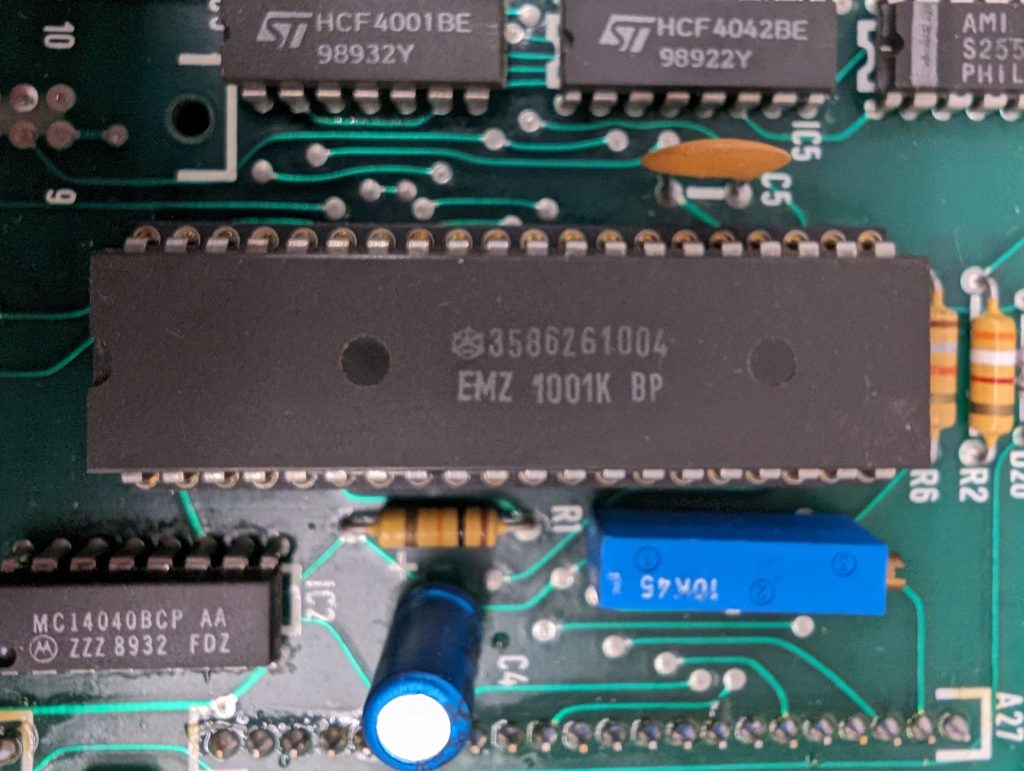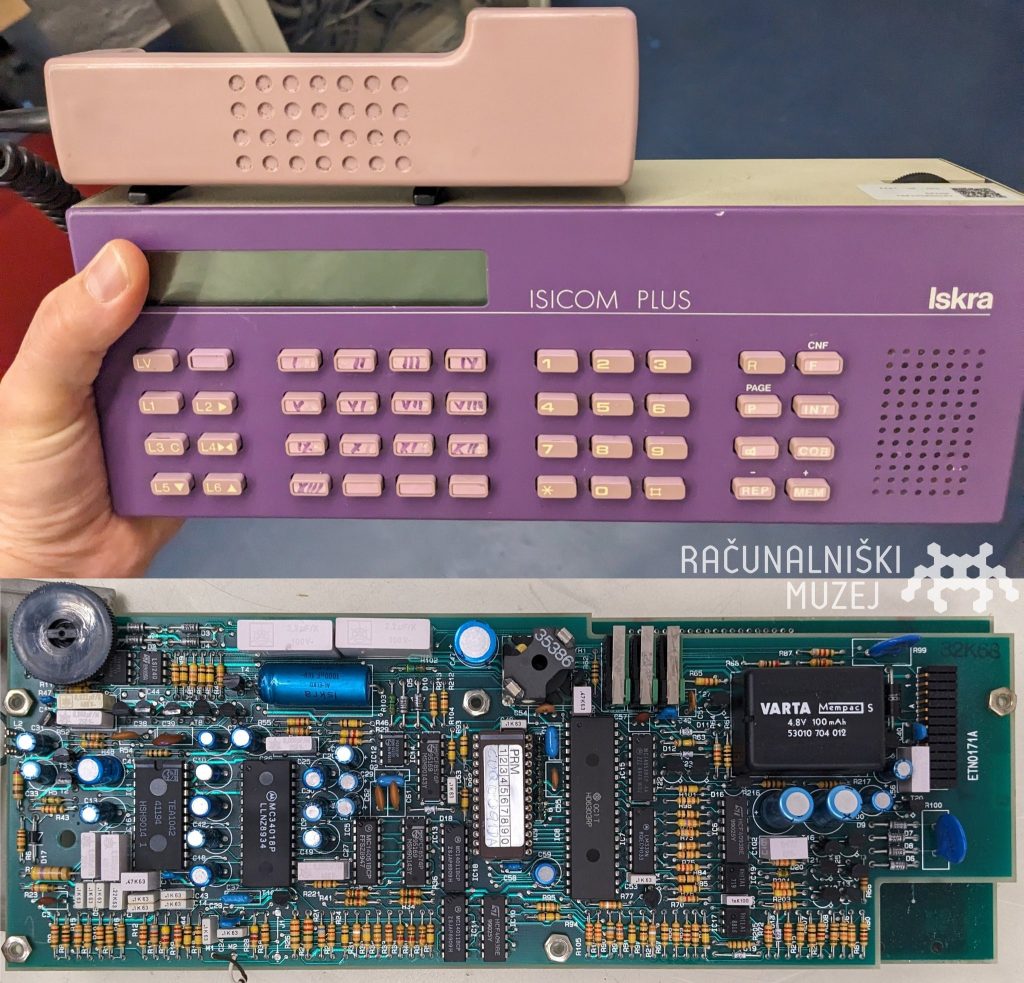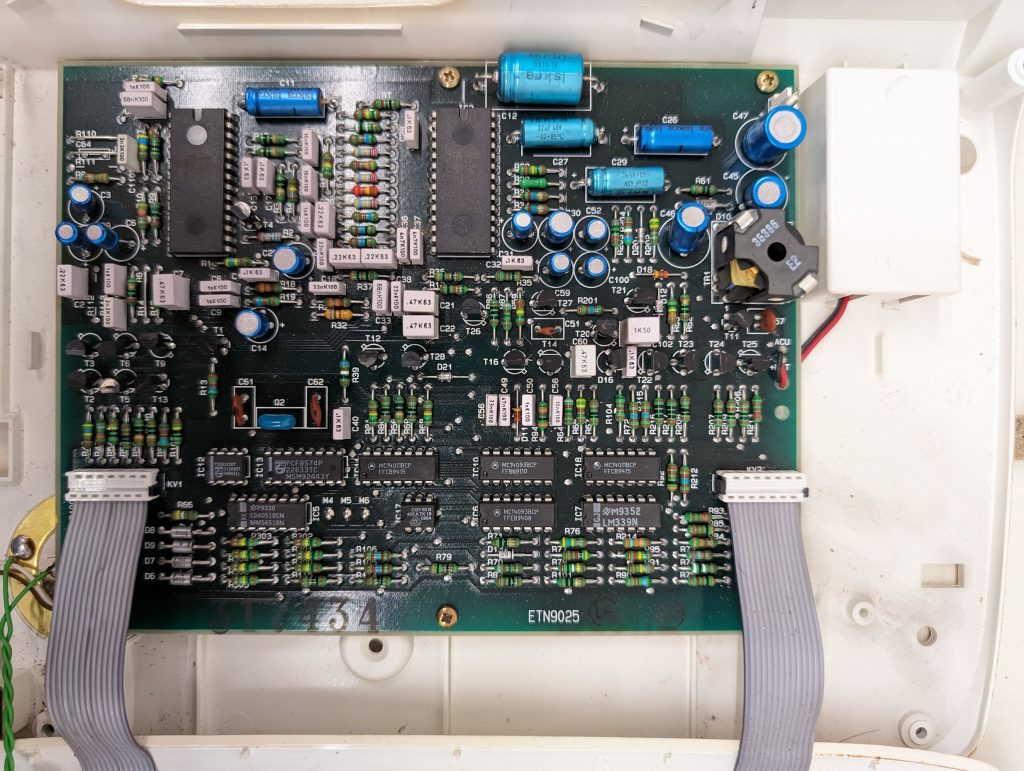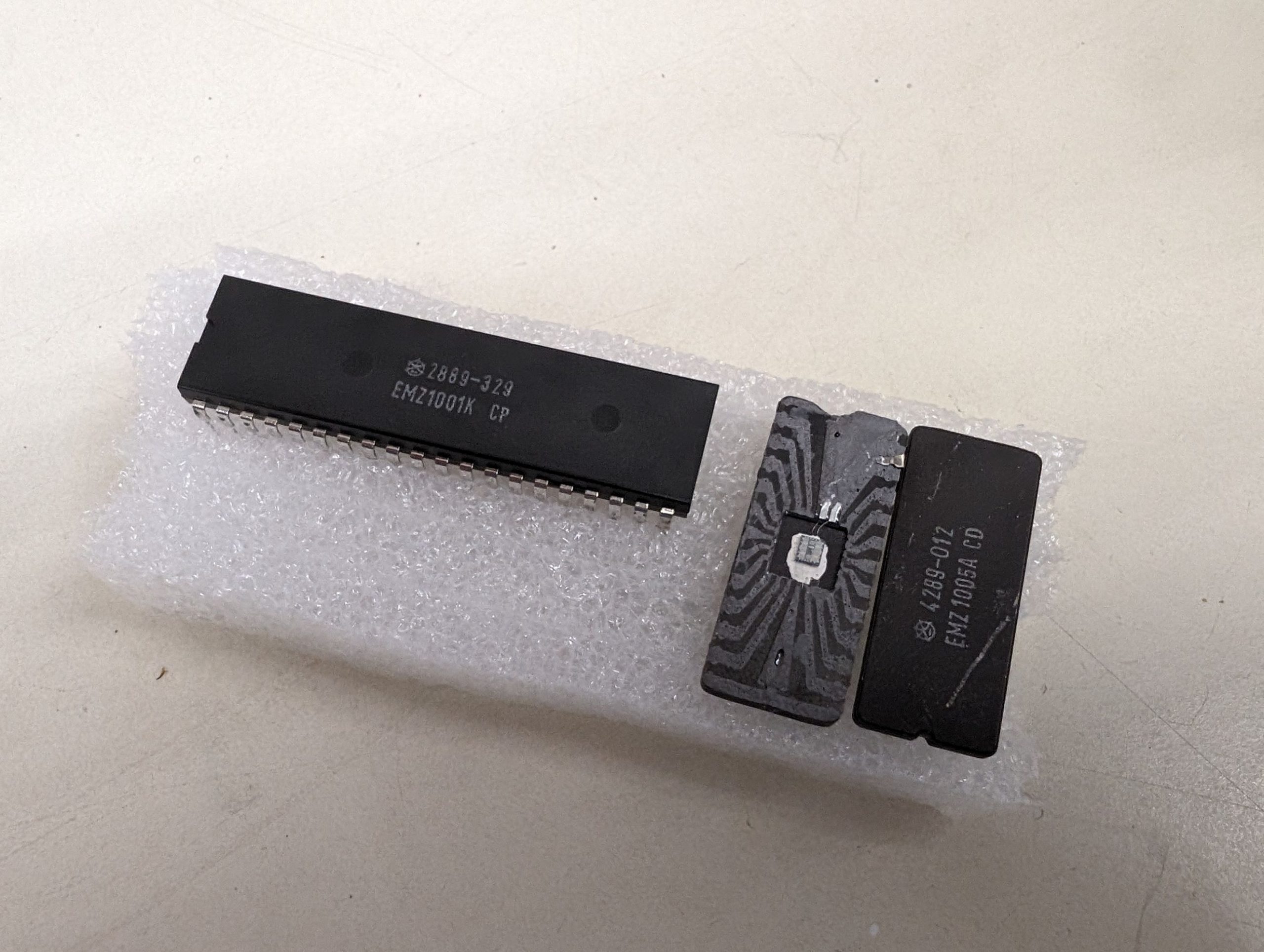In the laboratory of the Computer History Museum Slovenia, we decided to dig among our old devices to locate Iskra's 4-bit microcontroller, or microcomputer (as they were commonly called back then), the EMZ-1001, which was developed and designed at the Faculty of Electrical Engineering between 1975 and 1977.
Development and Features of the Iskra EMZ-1001
Upon its release in 1977, the Iskra EMZ-1001 was among the first circuits of its kind globally. Around the same time, Motorola introduced the more powerful and competitive 8-bit microcontroller M6801. The EMZ-1001 was developed at the Faculty of Electrical Engineering as part of a collaboration with the American company AMI. As a co-owner of the circuit design, AMI manufactured and sold it internationally under the name AMI S2000 in the late 1970s, at a wholesale price of about 5 dollars. It found usage primarily among manufacturers of home appliances.

Microprocessor families of that era were typically composed of main processor chips and numerous supporting circuits, such as memory units and various controllers. Microcontrollers, however, took a different approach. Designers integrated all necessary functionalities onto a single chip. This innovation significantly simplified electronic circuits and reduced manufacturing costs in mass production for simple devices, such as household appliances, electronic scales, various laboratory and consumer measurement instruments, arcade machines, electronic cash registers, sensor-based data collection devices, and more.
The architecture of the Iskra EMZ-1001 was specially tailored for devices equipped with various types of keyboards for data input and segmented LED displays for data output. For more details, see the journal Informatica (LINK)

The EMZ-1001 was housed in a standard ceramic DIP (dual-in-line package) with 40 pins, similar to many microprocessors of that era. Its 5×5 millimeter chip contained 13,000 transistors manufactured using NMOS technology. The processing unit operated at a clock speed of 900 kHz and included 256 bits (!) of RAM and 1 KB of ROM for software storage. Accompanying it were a macro assembler, a development module, a software simulator, and a text editor.
On the Hunt for the Iskra EMZ-1001
On the hunt for the EMZ-1001, we explored Iskra’s telephone terminals from the late 1970s and early 1980s. These were commonly referred to as secretarial sets. They were advanced telephone devices designed to connect to smaller private telephone exchanges. They were intended for office environments where it was necessary to manage multiple external and internal phone lines. They also allowed internal network calls and the storage of phone numbers.
These telephone terminals were one of Iskra’s biggest export successes at the beginning of the 1980s.
We opened and examined the Isicom Plus telephone terminal, a slightly newer and improved version of the Isicom Super terminal. Unfortunately, without success, as it did not contain Iskra’s microcontroller but a more powerful imported 8-bit Hitachi HD6303RP running at 1 MHz with 128B of RAM. Unlike the EMZ-1001, this one was made using the more advanced CMOS technology and was fully compatible with the popular family of 8-bit microprocessors and microcontrollers from Motorola, the M6800.

Then we opened and examined the newer Iskra Isicom Premier telephone terminal, which we coincidentally found during a visit to the former municipal building. This one also does not contain Iskra’s microcontroller.

Iskra Isicom Super
We found them in the original Isicom Super telephone terminal from 1979. In the museum collection, we have three, two of which are operational, including the accompanying private telephone exchange (which was also developed locally at the Faculty of Electrical Engineering in the seventies!) and a case with equipment for programming it. The case contains the Iskra PRO-GRM 781A EPROM programmer.

The Isicom Super telephone terminal boasted a contemporary single-line display and keyboard. It could manage 6 external and 16 internal lines. In addition to Iskra’s EMZ-1001 microcontroller, the terminal also featured the EMZ-1005A keyboard matrix control circuit. The developers received The Boris Kidrič Award for Inventions and Technical Improvements for this work.
Fortunately, the EMZ-1001 is nicely mounted in a suitable socket, making it very easy and non-invasive to remove from the device’s printed circuit board.
Iskra Isicom 80
We also found the EMZ-1001 in the Iskra Isicom 80 system phone, which uses the same casing as the iconic ETA-80 series phones. This device was designed for use in smaller organizations. It was used with smaller private exchanges that allowed connection of up to 8 Isicom 80 system phones, 3 simultaneous internal connections between them, conference calls, and more.

The Iskra EMZ-1001 microcontrollers were also installed in the scales of Tehtnica Železniki, in a gaming machine by Mehanotehnika Izola, and in a thermostat by ETA Cerkno at the end of the 1970s.
In the next part, we will report on the collaboration with a researcher from the United States, who will open and photograph our Iskra EMZ-1001K and EMZ-1005A circuits using a microscope. We will also present a project simulating this circuit and some other interesting materials.
Written by Marko Štamcar, Head of Museum Laboratory
